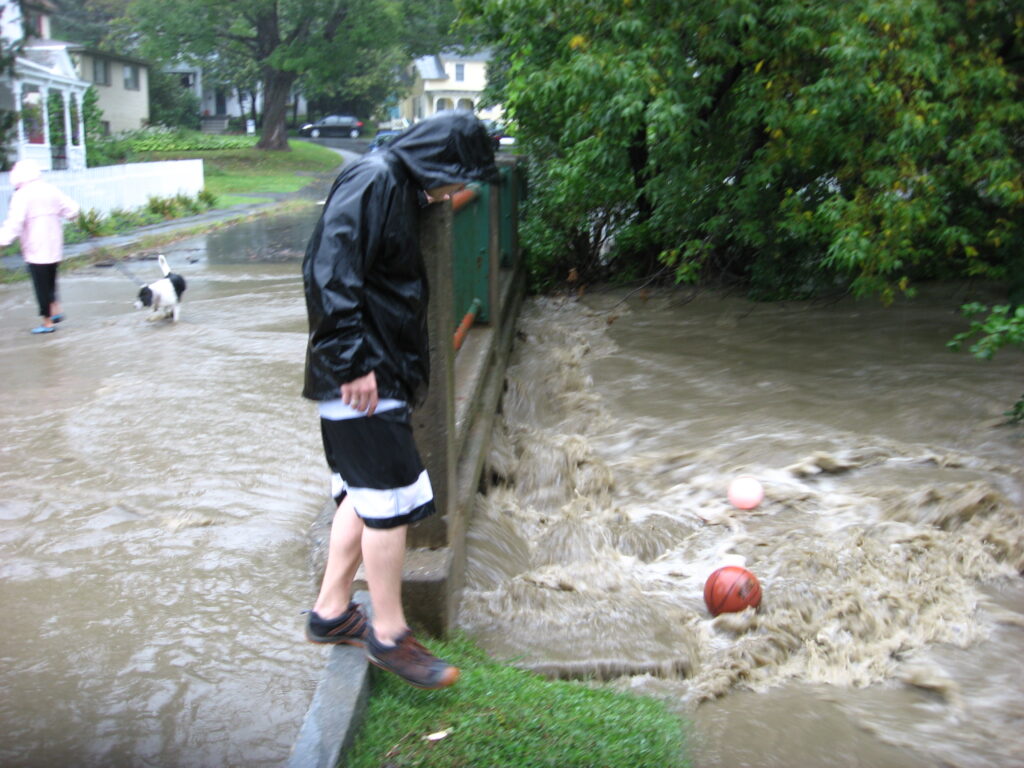Changing the Flood
Changing the flood #1
Stormwater Runoff
Changing how fast water runs off the land and into rivers attenuates flood flows- the same amount of water gets spread out over time and so does not get as high. Water can be kept on site (or at least slowed down) by wetlands, built retention ponds, or just natural landscapes where it later infiltrates into the ground. Water can be stored temporarily in huge underground tanks or small rain barrels. Such actions are especially good for smaller floods or when the land is dry.


Changing the flood #2
Dams
Dams can be very effective at flood control. Most recent floods have happened where dams exist, saving enormous amounts of damage. However, dams have many negative impacts, are extremely expensive, and hard to permit. We won’t be getting many new dams. And some of the dams we have in rivers right now may even increase local flood heights above them. Plus, they raise the possibility of enormous damage if they break.
Changing the flood #3
Channel Modifications
Straightening waterways increases the water’s speed and energy. Rivers respond by trying harder to wind back and forth, just like skiers do to slow down. Squeezing rivers into smaller channels, as we do in city and town centers (or even just to get it under a bridge), only increases their height and power. Instead of these historical actions, we can do the reverse, intentionally widening the channel and letting waters curve back and forth. This lessens flood energy and can lower flood heights. In some places we may have to hold the riverbank in place with rocks or concrete, but there will always be a price to pay on a different bank nearby.


Changing the flood #4
Ice/Debris
Floods aren’t just water. Trees, ice, and sediment can clog the channel, stick in culverts and essentially make a moving dam that can very quickly raise flood flows. Limiting ice and debris is hard and has downsides, but giving it places to go in floodplains can ensure less flooding.
